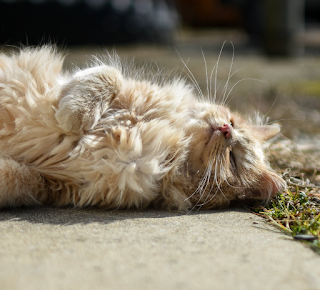**Solving the Mystery: Why Stray Cats Keep Visiting Your Home**
Ever wondered why a stray cat consistently shows up at your doorstep, seemingly waiting for your return? Perhaps it gives you that accusing look as if saying, “Where have you been, human? I’ve been waiting for hours!” While your initial response might be to shoo it away or offer a treat, have you ever pondered the meaning behind a stray cat choosing your house?
 |
|
| Cat Lying on Ground During Daytime Photo by Julissa Helmuth from Pexels |
Why Would a Stray Cat Visit Your House?
With an estimated quarter of a million unowned cats residing in urban areas across the UK, encountering a feline friend is highly probable. When a stray cat hangs around your house or seeks entry, it’s likely searching for a safe haven with food, water, and a touch of tender loving care.
Identifying a Stray Cat
Before taking any action, it’s crucial to determine whether the cat is genuinely a stray, someone’s lost pet, or a feral cat. Recognizing the differences guides your course of action:
1. Abandoned cats: Tame and accustomed to street life after being someone’s pet.
2. Feral cats: Unaccustomed to human presence, often avoiding contact. Look for a clipped ear, indicating trapping, neutering, and return to the street.
3. Stray cats: Usually in good condition, possibly a neighbor’s cat or a lost pet.
What to Do When a Stray Cat Comes to Your House
If a stray cat seeks refuge at your doorstep, taking a few simple steps ensures the safety of both you and your pets:
1. Offer food and water: Approach slowly if the cat seems friendly. For feral cats, maintain a distance to avoid scratches. Be prepared to place food in a safe outdoor spot to avoid encouraging frequent returns.
2. Provide a warm, safe place: If the cat is tame and the weather harsh, allow it inside. Offer a cozy spot away from other pets and children. Dry a wet cat if comfortable, but avoid contact if it’s scared or aggressive.
3. Check for identification: Look for a tag with the owner’s contact details if the cat willingly enters your home. Contact the owner immediately and keep the cat separated from your pets until its health status is clear.
4. Paper collar: If no identification, place a paper collar with your contact number around the cat’s neck. After a few days with no response, it’s likely a stray or lost.
5. Visit the vet: Even without a collar, a vet visit may reveal a microchip. If found, reunite the cat with its owner; if not, perform a health check.
Locating the Cat’s Owners
If the owner remains elusive, explore these avenues:
1. Create a flyer: Include a clear photo and detailed description. Distribute to vets, shelters, and high-traffic areas.
2. Social media and websites: Post on local Facebook pages, community groups, and pet-focused websites to maximize visibility.
When Owner Reunion Fails
If finding the owner proves challenging:
1. Adopt the cat: If you’ve formed a bond, adopting is an option. Remember, it’s a significant responsibility.
2. Ask friends or family: Inquire if anyone can provide a loving home.
3. Contact local shelters: Explore fostering options or inquire about private rescue groups. They may help find a permanent home for the cat.
Dealing with Feral Cats
For feral cats, consider the Trap-Neuter-Release (TNR) approach:
1. Place food outside: Ferals avoid human contact, so provide sustenance without forcing them inside.
2. Trap-Neuter-Return: Collaborate with local organizations for TNR programs. Identify neutered ferals by the clipped ear tip.
In conclusion, while welcoming a stray cat into your life may seem like a task, the rewards of providing a loving home and contributing to the solution of feral cat overpopulation make it worthwhile. Have any stray or feral cat experiences to share? We’d love to hear from you in the comments!
